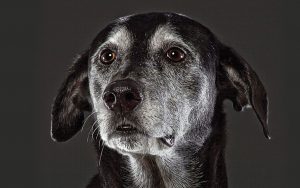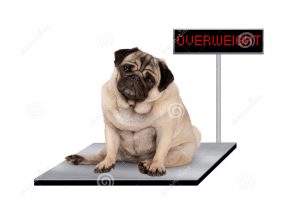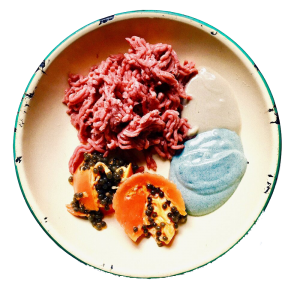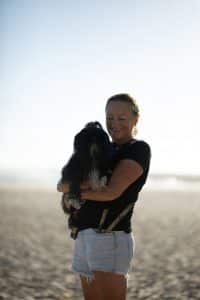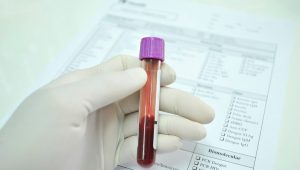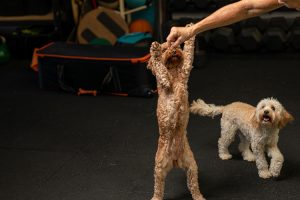Animals commonly experience disruption to their body systems, including the Central and Autonomic Nervous systems, requiring a nutritional correction to help balance the nervous systems, help restore emotional balance, help reduce nervousness and help promote relaxation as well as feelings of comfort and security.
Many dogs and cats experience emotional distress for a variety of reasons, including environmental and situational stress that can be episodic or chronic, related to traveling, boarding, day-care, vet and grooming visits; introduction into a new home or re-homing; loss of a family member or family pet; separation from owners; visiting guests; storms, transitional or traumatic events such as moving; competitive events; abuse, neglect and abandonment; deficiencies in diet (often related to processed foods including corn, wheat, soy, fillers, inferior proteins, chemicals, preservatives etc).
General anxiety is also commonly experienced by our dogs and cats that include irregular behaviours manifest as urine marking, excessive scratching, panting, trembling, shivering, aggression and depression.
The autonomic nervous system controls internal body functions that are not under conscious control in your dog or cat. When a dog or cat identifies or chases prey, the autonomic nervous system automatically increases their breathing rate and heart beat rate. The autonomic nervous system also dilates the blood vessels that carry blood to the muscles, releases glucose from the liver, and makes other internal adjustments to prep the body for a sudden and rapid increase in activity, like a chase.
When the chase ends, your pet’s nervous system automatically slows down all system processes and resumes normal body activities like supporting food digestion and regulating normal heart rate and blood pressure. The nerves of the autonomic nervous system originate in the spinal cord and pass signals between the vertebrae to support various organs.
There are two main parts to the autonomic nervous system, the sympathetic system and the parasympathetic system.
The sympathetic system stimulates what is commonly referred to as “fight or flight” response that allows an animal to respond to a threat such as defending itself against another animal or person, as well as the perceived need to run in defense. The sympathetic system increases heart and respiratory rates, and blood flow to muscles, while decreasing blood flow to the stomach and skin, until needed. This response causes the pupils of the eye dilate and your dog and cat will feel an “adrenaline rush.”
The parasympathetic system has the opposite effect on the sympathetic system. It maintains the normal functions of a body in a state of relaxation, including normal digestion, elimination and urination, as well as maintains a regular heartbeat and breath rate.
The sympathetic nervous system (SNS) is part of the autonomic nervous system (ANS), which also includes the parasympathetic nervous system (PNS).
Our dogs and cats (and all animals) have complex nervous systems that receive and interpret sensory signals from the environment and then send out messages to direct the animal’s response. The complexity of an animal’s nervous system depends on its lifestyle and body plan.
Animals have a two-part nervous system: The central nervous system (CNS) consists of the animal’s brain and central neurons. It’s housed in the head and may continue along the back.
The peripheral nervous system (PNS) consists of all the nerves that travel from the CNS to the rest of the animal’s body.
The nervous system has three basic functions:
1. Sensory function senses changes both outside and inside the animal body. Outside the body, your dog’s or cat’s eyes will sense changes in light and their ears respond to sound waves. Inside the body, receptors in the stomach indicate when it is full and chemical receptors in the blood vessels monitor the acidity of the blood.
2. An integrative function occurs which includes the processing of information received from the sensory organs. The impulses from these organs are assessed and stored as memory. The varied impulses from different sources are sorted, synchronized, coordinated and the appropriate response is initiated. The complexity related to the power to integrate, remember and apply experience gives higher animals much of their superiority.
3. Motor function responds to stimuli that causes muscles to contract and the glands to secrete. All nervous tissue is made up of nerve cells or neurons. These transmit high-speed signals called nerve impulses, which are similar to an electric current.
In all animals with a backbone, the Central Nervous System consists of a brain and a spinal cord. The brain contains centres that process information from the sense organs, centres that control emotions and intelligence, and centres that regulate the physiological balance of the body (homeostasis). The spinal cord controls the flow of information to and from the brain.
Both the brain and the spinal cord are highly protected. They sit within a liquid called cerebrospinal fluid that guards the Central Nervous System against shocks caused by movement and they’re protected by the bones of the skull and vertebrae. The Central Nervous System also supports the brain and spinal cord by supplying nutrients and helping to remove wastes.
The blood-brain barrier, which is created by the capillaries surrounding the brain, provides yet another layer of protection because the capillaries are highly selective about what they allow to enter the brain or cerebrospinal fluid, and is a critical component in maintaining whole body health. A final layer of protection is the meninges, two layers of connective tissue that surround the brain and spinal cord.
From the Central Nervous System, the nervous system branches off into the PNS, this is divided into two systems:
Somatic nervous system: Part of the Parasympathetic Nervous System, the somatic system carries signals to and from the skeletal muscles and controls many of your dog and cat’s voluntary responses to its environment.
Autonomic nervous system: Control mostly involuntary internal processes in the body, such as heart beat and digestion. It has two divisions that work in opposition to each other to maintain balance (homeostasis).
Helpful suggestions:
Ensure your home environment promotes relaxation and does not create undue stress for your pet. The stress you feel or show may be internalized by your pet. You may be able to identify stress triggers and work to prevent them in the future.
If your pet becomes distressed during a lightning storm or fireworks, provide a hiding place like a box or shelter under the bed.
Make sure your pet gets plenty of play time and exercise to destress and decompress. Regular exercise helps burn up stress-related hormones such as adrenaline, releases endorphins and helps keep the lymphatic system toned and balanced.
Feed a home cooked, raw or dehydrated diet. A balanced diet will energize your pet’s body and help him or her to cope better with stressful situations. Nutritional deficiencies can cause ongoing stress response in your pet. In addition a premium protein, fatty acids, digestive enzymes and amino acids are essential ingredients, but also, Vitamin B, calcium, magnesium and taurine should be part of diet plus tryptophan may help alleviate stress response in dogs and cats.
The parasympathetic nervous system (PNS) controls homeostasis and the body at rest and is responsible for the body’s “rest and digest” function. The sympathetic nervous system (SNS) controls the body’s responses to a perceived threat and is responsible for the “fight or flight” response.
The PNS and SNS are part of the autonomic nervous system (ANS), which is responsible for the involuntary functions of the human body.
Comparison chart
| Parasympathetic nervous system versus Sympathetic nervous system comparison chart | ||
| Parasympathetic nervous system | Sympathetic nervous system | |
| Introduction | The parasympathetic nervous system is one of the two main divisions of the autonomic nervous system (ANS). Its general function is to control homeostasis and the body’s rest-and-digest response. | The sympathetic nervous system (SNS) is one of two main divisions of the autonomic nervous system (ANS). Its general action is to mobilize the body’s fight-or-flight response. |
| Function | Control the body’s response while at rest. | Control the body’s response during perceived threat. |
| Originates in | Sacral region of spinal cord, medulla, cranial nerves 3, 7, 9, and 10 | Thoracic and lumbar regions of spinal cord |
| Activates response of | Rest and digest | Fight-or-flight |
| Neuron Pathways | Longer pathways, slower system | Very short neurons, faster system |
| General Body Response | Counterbalance; restores body to state of calm. | Body speeds up, tenses up, becomes more alert. Functions not critical to survival shut down. |
| Cardiovascular System (heart rate) | Decreases heart rate | Increases contraction, heart rate |
| Pulmonary System (lungs) | Bronchial tubes constrict | Bronchial tubes dilate |
| Musculoskeletal System | Muscles relax | Muscles contract |
| Pupils | Constrict | Dilate |
| Gastrointestinal System | Increases stomach movement and secretions | Decreases stomach movement and secretions |
| Salivary Glands | Saliva production increases | Saliva production decreases |
| Adrenal Gland | No involvement | Releases adrenaline |
| Glycogen to Glucose Conversion | No involvement | Increases; converts glycogen to glucose for muscle energy |
| Urinary Response | Increase in urinary output | Decrease in urinary output |
| Neurotransmitters | neurons are cholinergic: acetylcholine | neurons are mostly adrenergic: epinephrine / norepinephrine (acetylcholine) |



